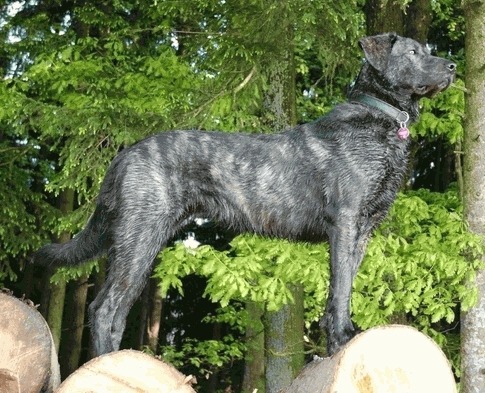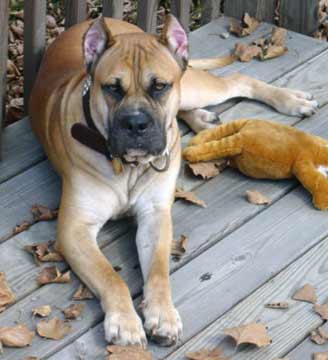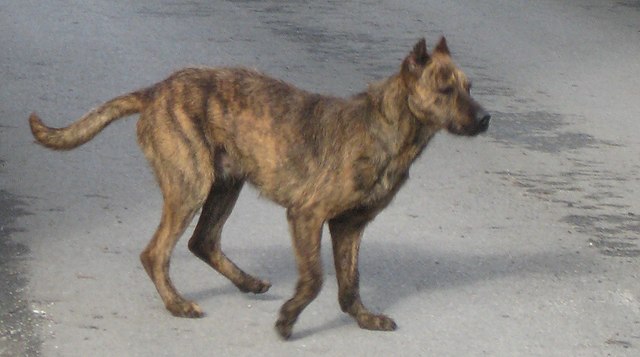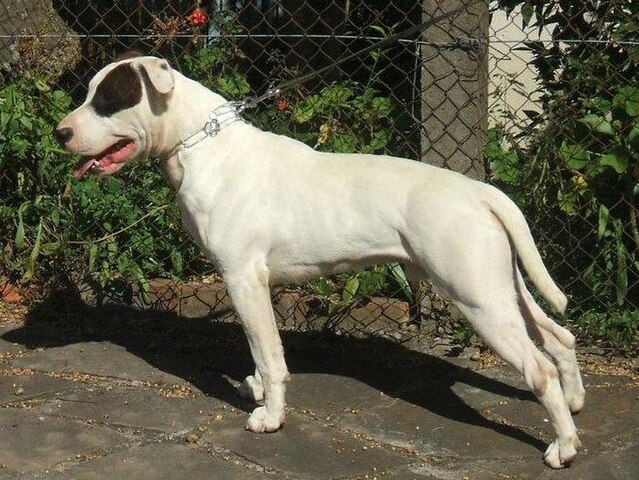The Cao de Castro Laboreiro is a very old breed, mentioned in texts as early as the 1800’s. Named after a village in the mountain of Portugual, he is also known as the Castro Laboreiro Dog, the Portuguese Cattle Dog or the Portuguese Watchdog. This livestock guardian breed was tasked with watching over cattle and guarding the herd. A true working guard dog, they had earned a reputation of being ferocious toward predators when needed. Sadly, as predators began to dwindle in numbers in their home country, many dogs lost their jobs and homes. Abandoned by their owners, it was unfortunately common for them to become feral in the mountains of Portugal for a time. Luckily, this is rarely the case nowadays and the breed has since been re-domesticated and are used mainly as guard dogs today. This breed is rare in the United States but is recognized here by the UKC, and by the FCI abroad.
The Laboreiro is a very protective, dominant breed. He has a natural territorial nature and will patrol the house or yard without special training – often choosing a high spot to rest where he can see the majority of the property. His fearless demeanor and tendency to take control of situations makes him very ill-suited to first-time dog owners! He is said to “threaten first and greet later”. This said, he can be good with children of the family although may be less tolerant of strange children. When raised correctly, he is docile with his owners and develops a strong bond. However he can be extremely suspicious of strangers and even aggressive in certain circumstances.
Cao de Castro Laboreiros are intelligent dogs although many will only perform commands if prompted by their owners. They will not tolerate abusive training methods and instead need firm, yet fair discipline from experienced owners. Because they were bred to do a job, they require assigned work in order to be happy and behaviorally sound. Members of this breed can be seen in the Portuguese Marine Corps, where they have been used as police and military dogs. They have also been used as guide dogs and competitors in dog sports such as agility. They tend to learn obedience commands quickly although their independent nature means they may not always “decide” to perform the command.
The Laboreiro is not a loud dog by nature. He tends to only bark when he needs to – usually to warn of a stranger approaching the property. The sound itself is peculiar and unique, starting on a low tone and ending in a high pitch. He does best in a home with a large yard somewhat secluded from constant crowds of people. Apartments or busy city life can work him into a frenzy as he will likely feel the need to be on constant alert. In a more rural area, he can be allowed to roam the property and be taken for long daily walks without worry of frequent stranger interaction. The Castro Laboreiro is an active breed that does require regular exercise by an owner that is physically able to control this strong dog. When given enough exercise, however, he is surprisingly calm in the home.
The Cao de Castro Laboreiro was bred to be hardy and healthy – living with flocks and requiring little veterinary care. Because of this there are no common health problems in the breed (although like any breed, any individual dog can always develop a health issue). Average lifespan is 12 years. Grooming is also simple, as this single-coated dog requires only basic coat care. They shed very little, and some even claim that the breed is less likely to bother allergy sufferers.
The Laboreiro may have issues with other dogs, owing to their territorial nature. They do best as only-pets in the home, and are not a breed that will thrive in a dog park or daycare situation. In contrast they do very well with livestock, which should come as no surprise. The early lifestyle of the breed was one in which they lived outside with their herd, ever watchful and on-duty even in bad weather conditions.
Every year in Portugal, a competition for Cao de Castro Laboreiro dogs is held. It is the oldest competition of its kind in the country having started in the 1950’s. Like most dog shows, the Laboreiros are judged on their conformation. Judges look for a Mastiff-type frame and strong build, being medium-sized yet muscular. The coat is short, thick and coarse and comes in a variety of “wolf colors” and/or brindle in all shades. Despite a spotty past, thankfully these handsome dogs are once again appreciated and admired in their home country.




